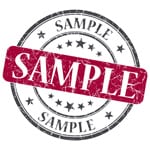By Marie Chevrier
The concept of product sampling seems incredibly simple: you give consumers a little piece of your product with the hopes of a favorable experience, a purchase and ideally, loyalty to your brand. Sampling has been around for years but still leaves many brands stressing, questioning if the end result will justify the cost of giving away free product.
 Traditional sampling is changing, becoming more creative, innovative and branching out from its original industries. What was formerly limited to solely food and cosmetics has extended to technology and services. Companies are thinking outside the box to share products with consumers. Sampling can be an extremely effective strategy when executed properly, but distributing samples at random can result in wasted time, resources and money.
Traditional sampling is changing, becoming more creative, innovative and branching out from its original industries. What was formerly limited to solely food and cosmetics has extended to technology and services. Companies are thinking outside the box to share products with consumers. Sampling can be an extremely effective strategy when executed properly, but distributing samples at random can result in wasted time, resources and money.
These five strategies will help you create a successful product sampling strategy and avoid wasting time.
1. The Target Market
Picking a target demographic is the first step. Asking yourself who you want to distribute your samples to is crucial in developing your brand. Decide why you’re sampling to this group. Who do you visualize using, enjoying and benefitting from your brand? Whether you’re sending out a baby product or an energy drink, knowing who will care is step one. By identifying this group early on in the process, you also have a better chance of reaching others in your target demo through recommendations. A Nielsen report found that 70% of consumers said that recommendations are the number one factor influencing purchasing decisions.
2. The Medium
The next step is discovering how to spread the word to your target demographic. You’ve identified your key group but how do you reach them? Say goodbye to only handing out product in-person or at events. They could be stay-at-home moms who read parenting blogs or possibly, college students who follow the same “Insta-famous” celebrity. Discovering where they are, what they watch and who they listen to is imperative in getting your samples in the right hands. Utilizing online platforms and social media is an out-of-the-box way to get actual results from sample requests and increase sharing among friends.
3. A Call To Action
Every strategy needs a call to action. Why are you sampling? Are you gathering feedback, boosting a social media following or increasing purchase? What is your target demographic being redirected to do? Asking yourself these questions will help you collect the data you need to further develop your brand and maximize ROI. With social sampling, you only need to ask a consumer for minimal information that he or she is likely already used to providing online, like an email address.
4. Key Performance Indicators
Identifying your key performance indicators is essential to your plan for success. How will you deem your campaign successful? Determine key performance indicators that provide a high amount of insight and have a short and long-term impact. Learning the industry standards and setting clear goals that reflect various areas of your brand will help you properly execute your strategy and determine what works versus what doesn’t.
5. The Re-Marketing plan
Now that you’ve got their attention, what are you going to do to drive that consumer to purchase? This is why it’s important to collect consumer information when sending out free samples. Following up with a coupon, a newsletter or exclusive sweepstakes are just a few of the ways to keep the consumer engaged. Making sure consumers are aware of your brand is important and can be the final push for a product purchase—meaning, all of your hard work has paid off.
Marie Chevrier is chief executive officer and founder of Sampler.



